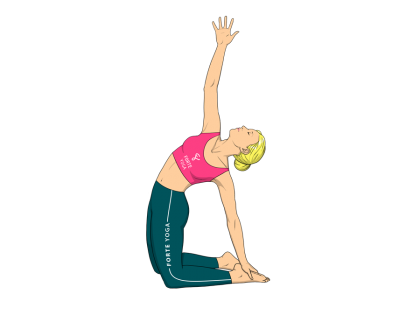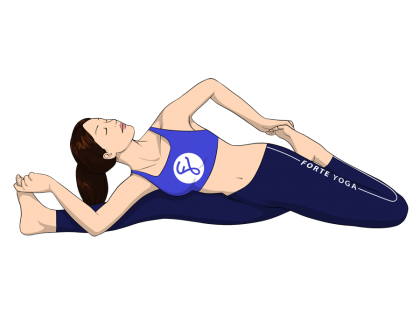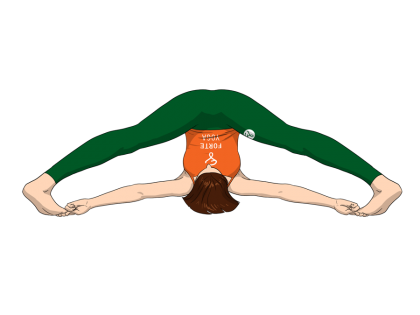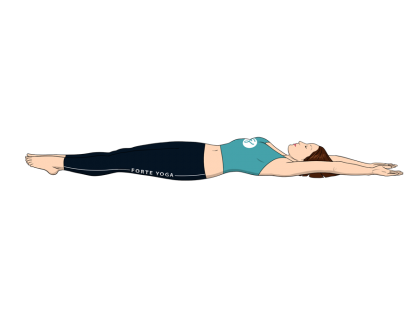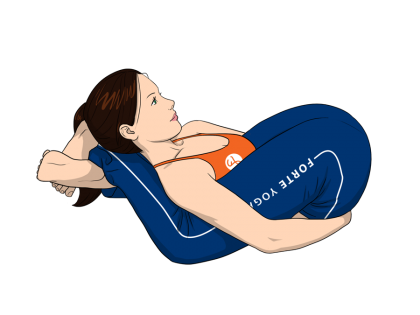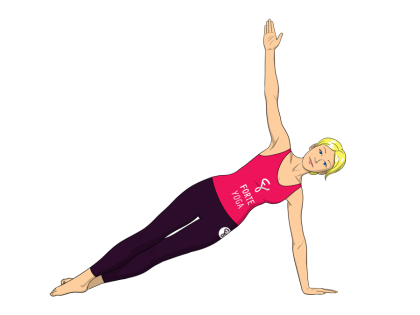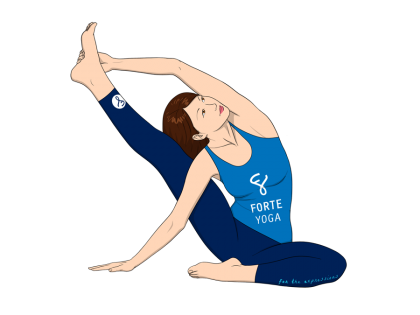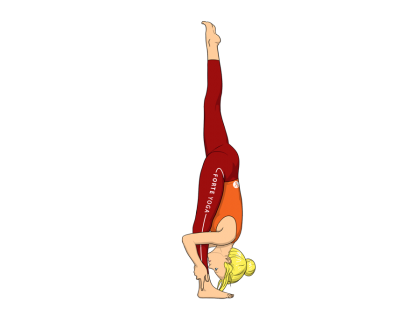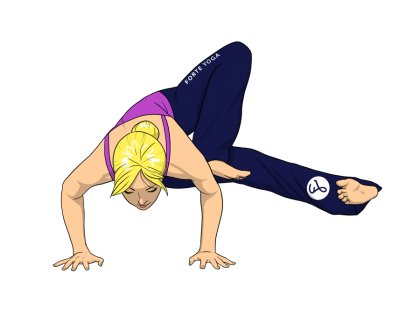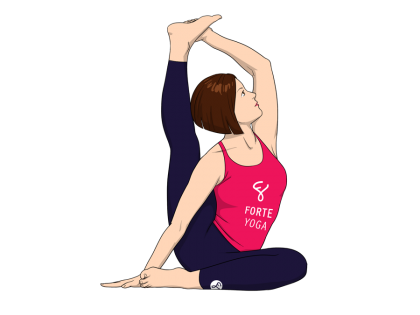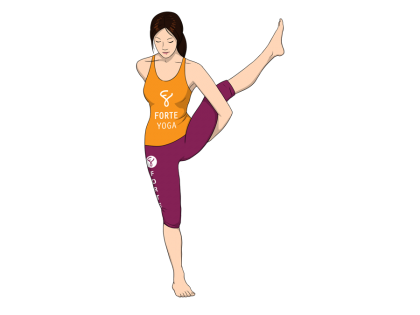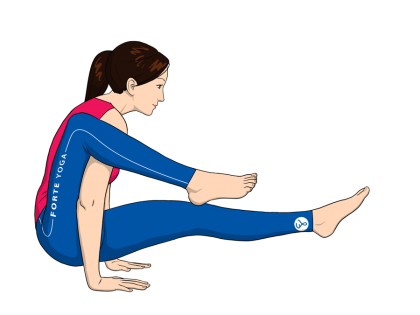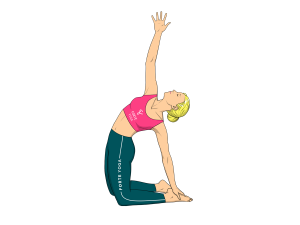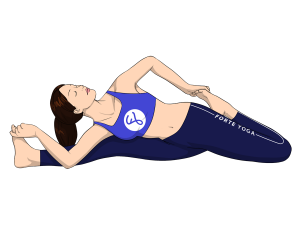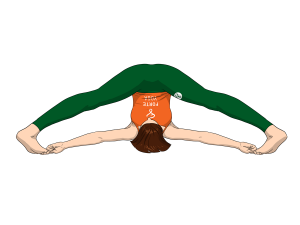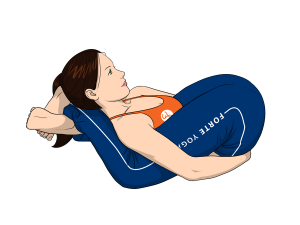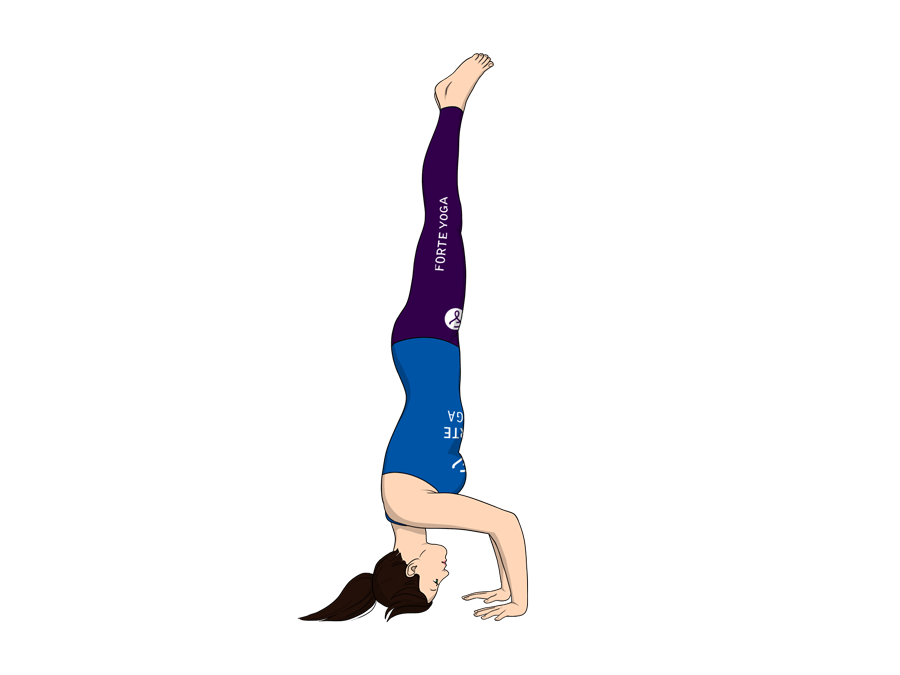
overview
Tripod Headstand is an inverted yoga pose that targets the triceps and abs and is ideal for yogis and yoginis at an advanced level.
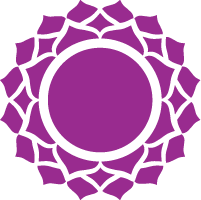 sahasrara – the crown chakra
sahasrara – the crown chakrarelated poses
[yoga-sharrre]
How To Do Tripod Headstand Yoga Pose
- Start in the Cat Pose (Marjaryasana); you should be on your hands and knees, hands pressed against the floor and shoulder-width apart with knees hip-width apart. Your hands should be about a foot away from a wall and your elbows directly under your shoulders (more experienced practitioners may feel comfortable without a wall nearby). Spread your fingers in front of you, palms down, and press them into the floor. Keep your shoulders wide.
- Exhale and lower your head to the floor, resting the crown of the head on the mat between and just in front of the hands. Your elbows should be positioned directly above your wrists and both hands should be in your line of sight.
- Inhale and lift your hips up, straightening the legs into a modified Downward Facing Dog position (Adho Mukha Svanasana), keeping your hands and head stationary. Hold this position for a few breaths until you feel balanced.
- Once you’re ready to move on, begin walking your feet closer to your hands. Resist the urge to bring your head in closer to the wall; make sure to keep your chest in the same position, actively pulling it away from the wall as you walk forward. Don’t bring your feet in so close that you’re unstable, but just enough that you feel your hands develop a strong root to the ground. The backs of your upper arms should be facing upward, parallel to the floor to form a shelf.
- Exhale and lift the right leg, bending at the knee, and rest the knee on the shelf of your right tricep. When you’re ready, repeat the same action with the left knee to rest on the left tricep on another inhale. Both feet should be lifted off of the ground, soles of the feet facing upward toward the ceiling. Keep the triceps active, pushing them into knees. Hold this balance pose for a few breaths; this may be all you can manage for several sessions.
- If you feel comfortable, continue on to the full pose. Exhale and lift your hips upward, keeping your legs drawn toward the chest and the spine straight. Be sure to keep the shoulders lifted and elbows tucked inward, not allowing them to splay out toward the sides. Continue lifting the hips until they are evenly stacked above the shoulders. Keep your abs tight to reinforce your core, which will take over the weight of the legs as your hips lift into place.
- Let your knees gently lift off of your triceps, doing so simultaneously if possible. Keeping the inner heels and insides of the big toes together, extend your legs up toward the ceiling until they are fully extended and knees are unbent.
- Start out with a goal of 10 seconds, but hold the position as long as you can comfortably. If possible, try to add time in 5-10 second intervals until you can hold the pose for 3-5 minutes. When coming out of the position, do not allow your weight to drop on your neck; continue to press your shoulders into your back through the whole position, even as you lower your legs. Exhale while bringing your legs down, resting the knees on the triceps again if necessary, or lowering directly to the ground simultaneously. Rest in Child’s Pose (Balasana) for a few breaths.
Notes
- Avoid this asana if you currently have a neck or back injury, or if you are experiencing frequent headaches.
- Avoid this asana if you have a wrist or knee injury.
- Avoid if you have high blood pressure (hypertension), low blood pressure or a preexisting heart condition.
- Do not perform during menstruation. If you are pregnant, only perform this position if you are experienced with it — do not attempt to learn while pregnant. Even if you are experienced, it’s recommended that you consult your physician.
Tips
If having trouble with this pose, particularly by putting too much strain on the neck, try doing these steps against a wall.
Stretches & Strengthens
All Muscles: Legs, Triceps, Biceps, Shoulders, Abs, Spine
Target Muscles: Triceps, Abs
Target Muscles: Triceps, Abs
Health Benefits of Tripod Headstand Yoga Pose
- Increases concentration and can help improve memory by increasing blood flow to the brain.
- Can relieve stress and symptoms of mild depression.
- Can improve digestion.

